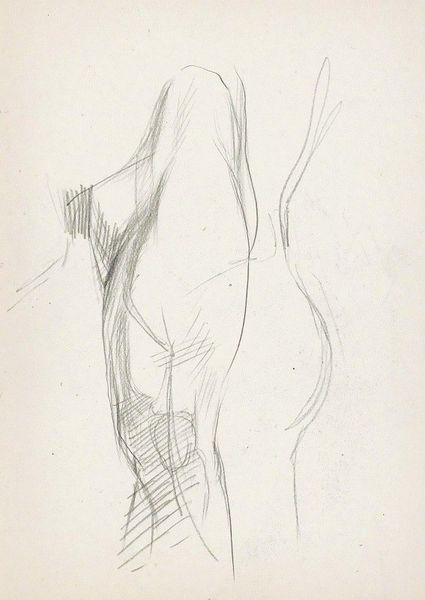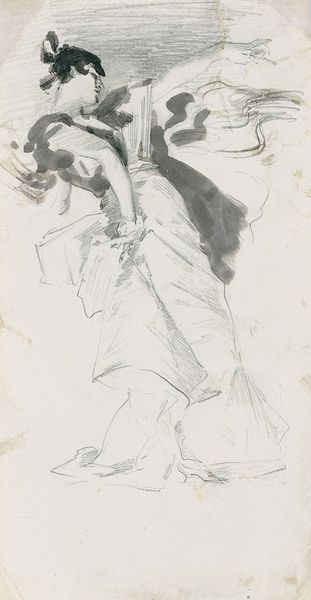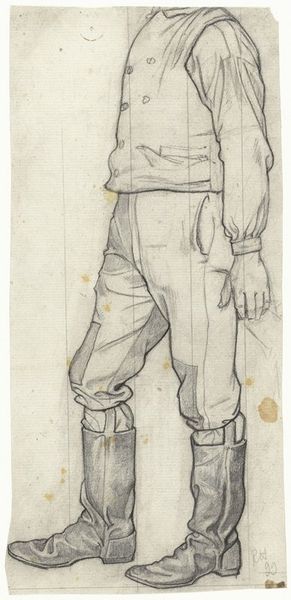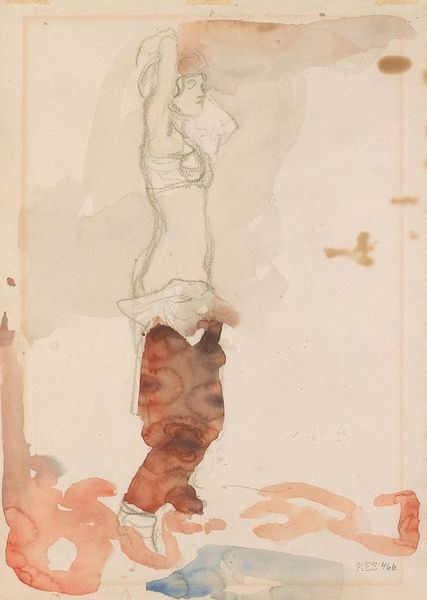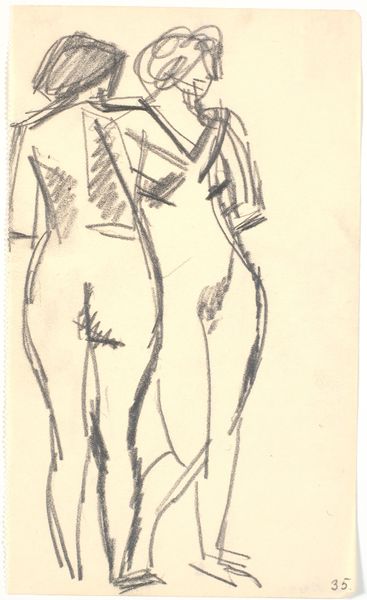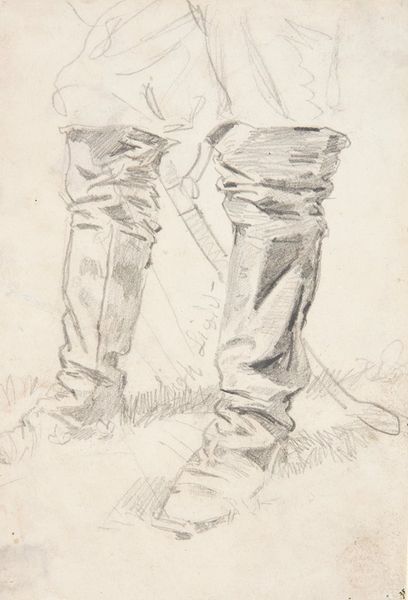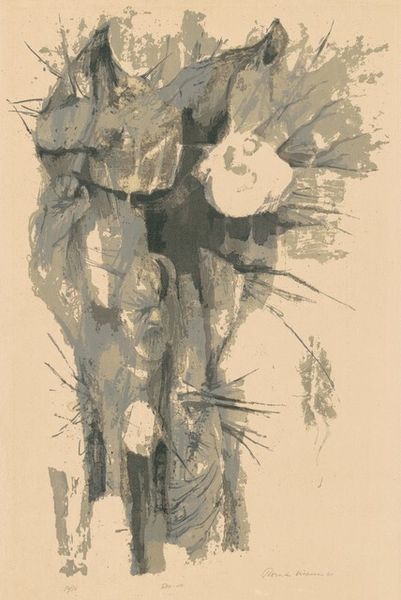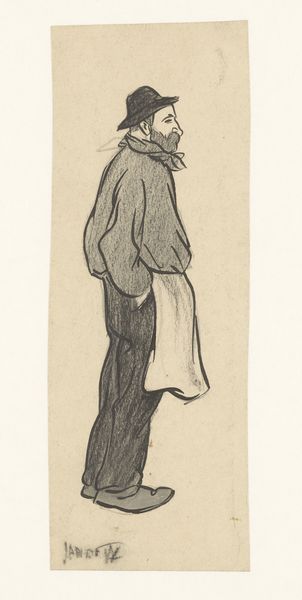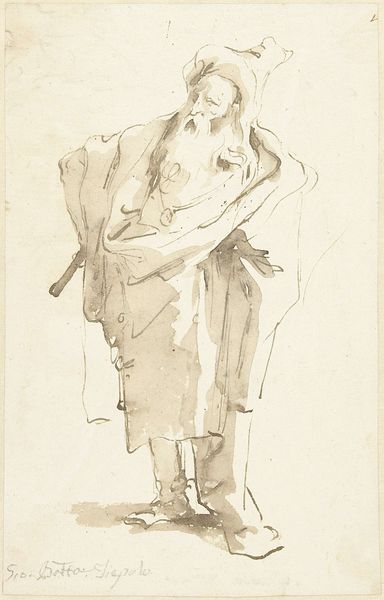
drawing, pencil
#
portrait
#
drawing
#
art-nouveau
#
pencil sketch
#
figuration
#
pencil
#
line
#
symbolism
#
portrait drawing
Copyright: Public Domain: Artvee
Curator: Jules Chéret's pencil drawing, "Dessin original pour la couverture des Maîtres de l’Affiche," from 1896, presents us with a striking figure. Editor: It's playful, isn't it? There’s a lightness, almost a coy theatricality to it. The quick pencil strokes give it a spontaneous energy, like a captured moment mid-performance. Curator: Absolutely. The figure, dressed in what appears to be a harlequin costume, highlights Chéret's involvement in the Parisian poster scene, which became a vital visual medium with complex socio-political functions. Editor: A visual medium, certainly, especially for gendered portrayals. I’m intrigued by the choice of depicting the harlequin from behind. It’s a rejection of the direct male gaze that forces us to look beyond immediate stereotypes and analyze the nuances of performance itself. Curator: Interesting. It speaks to the public role of art. The costume's design aligns with the art nouveau movement's fascination with lines and flattened perspective. The choice of pose almost obscures a clear reading, challenging the observer's interpretive role, perhaps reflecting turn-of-the-century anxieties around shifting social roles. Editor: And what about the harlequin itself, beyond the social commentary? Its inherent ambiguity and blurred lines. Consider the legacy of marginal figures in visual media that invite alternative readings—not just a celebration of Parisian life, but an assertion of alternative modes of selfhood through dress and attitude. Curator: I agree that Chéret offers complex social commentaries beyond simple aesthetics. I appreciate how these fleeting lines and carefully crafted imagery are inseparable. It underscores the artist's awareness of the growing power and complexities in fin-de-siècle Parisian life, offering much to explore. Editor: Indeed. The drawing encourages a reflection on how we frame the subjects that shape us in art and society.
Comments
No comments
Be the first to comment and join the conversation on the ultimate creative platform.



